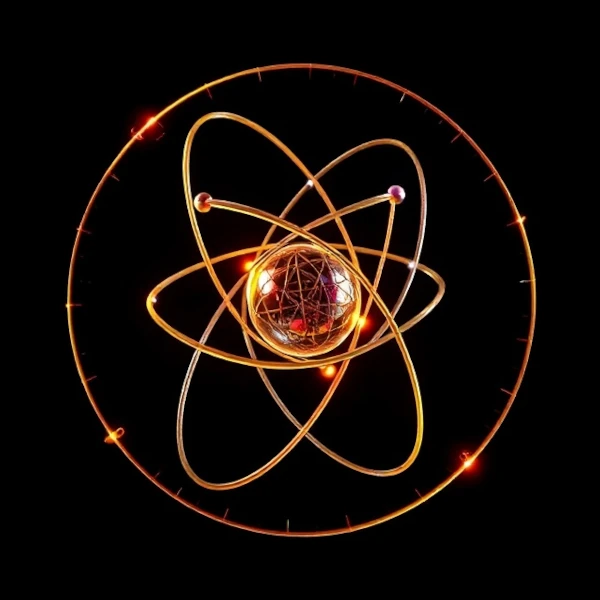
The proton, a fundamental particle that, together with the neutron, makes up the nucleus of atoms, has a mass of approximately \(1.6726 \times 10^{-27}\) kg. However, if we add up the masses of its elementary constituents—two up quarks and one down quark—we only obtain a tiny fraction of this mass. So where does most of the proton's mass come from? The answer lies in one of the most fascinating discoveries of modern physics: the energy of the interactions between quarks and gluons within the proton.
According to the Standard Model of particle physics, the proton is composed of three "valence" quarks (two up quarks and one down quark) held together by the strong interaction, mediated by particles called gluons. However, the simple sum of the masses of the valence quarks accounts for only about 1% of the proton's total mass:
\(m_{proton} \approx 938 \text{ MeV}/c^2\)
\(m_{up} \approx 2.3 \text{ MeV}/c^2\)
\(m_{down} \approx 4.8 \text{ MeV}/c^2\)
\(2m_{up} + m_{down} \approx 9.4 \text{ MeV}/c^2 \approx 1\% m_{proton}\)
The remaining 99% comes mainly from the kinetic energy of the quarks and the energy of the gluons that bind them, according to Einstein's famous mass-energy equivalence \(E = mc^2\).
The strong interaction is so powerful that it confines quarks inside the proton. Gluons, the carriers of this force, continuously exchange energy between quarks and also create virtual quark-antiquark pairs that constantly appear and disappear. This "sea" of virtual particles contributes significantly to the proton's mass.
The theory describing these interactions is Quantum Chromodynamics (QCD), which has the particularity of having a coupling constant that decreases at high energy (asymptotic freedom) but increases at low energy, explaining why quarks cannot be isolated.
Calculating the proton's mass from the first principles of QCD represents an immense computational challenge requiring supercomputers and lattice calculation techniques. These simulations confirm that most of the mass indeed comes from the energy of the gluons and the kinetic energy of the quarks.
Experimentally, deep inelastic scattering of electrons on protons has made it possible to probe the internal structure of the proton and validate QCD's predictions regarding the distribution of quarks and gluons.
| Mass source | Approximate contribution | Description | Physical origin |
|---|---|---|---|
| Masses of valence quarks | ∼ 1% | Intrinsic masses of up and down quarks | Interaction with the Higgs field |
| Kinetic energy of quarks | ∼ 32% | Movement of quarks inside the proton | Confinement by strong interaction |
| Energy of gluons | ∼ 37% | Gluon field binding quarks | Strong interaction and gluon self-interaction |
| Anomaly term | ∼ 30% | Additional quantum contributions | Conformal anomaly in QCD |
Source: Reviews of Modern Physics - Proton structure and Nature - Proton mass calculations in lattice QCD.